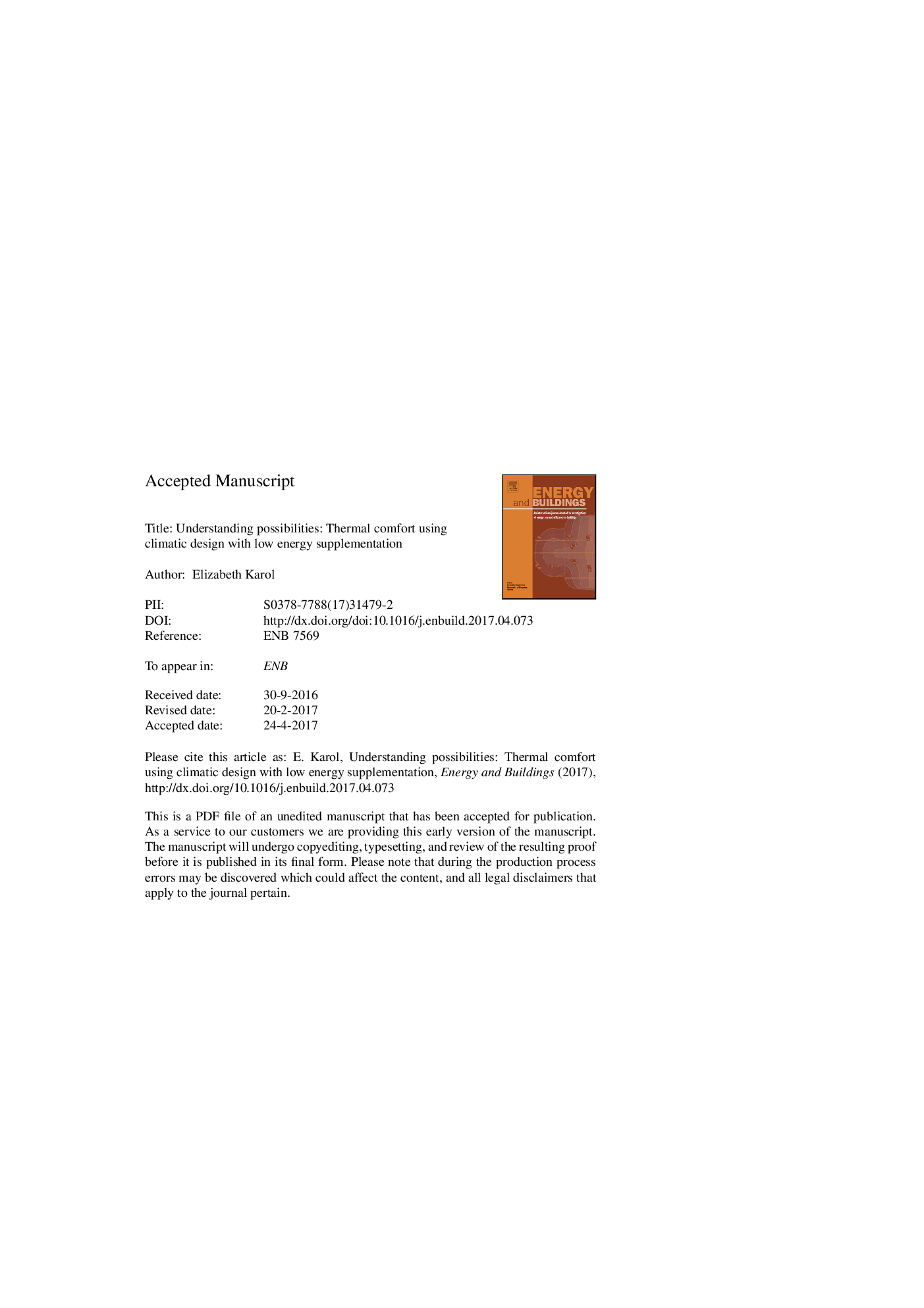| Article ID | Journal | Published Year | Pages | File Type |
|---|---|---|---|---|
| 6729405 | Energy and Buildings | 2017 | 14 Pages |
Abstract
This paper uses an example of an architect designed and occupied suburban house in the temperate climate of Perth, Western Australia to demonstrate how climatic design and low-technology active systems can deliver thermal comfort in average climatic conditions. However when thermal conditions are more extreme acceptable temperature ranges may not be met. Thermal monitoring in the house over eight days of extreme temperatures in summer and winter shows that acceptable temperature ranges may not be met in winter. During extreme winter conditions south facing rooms fall below comfort conditions by up to 3Â K in the late night and early morning. The conclusion drawn is that in naturally ventilated buildings personal and psychological behavioral adaptation must go hand-in-hand with climatic design. This behavioral adaptation may become more important in the future if current climatic extremes become the new normal.
Related Topics
Physical Sciences and Engineering
Energy
Renewable Energy, Sustainability and the Environment
Authors
Elizabeth Karol,
